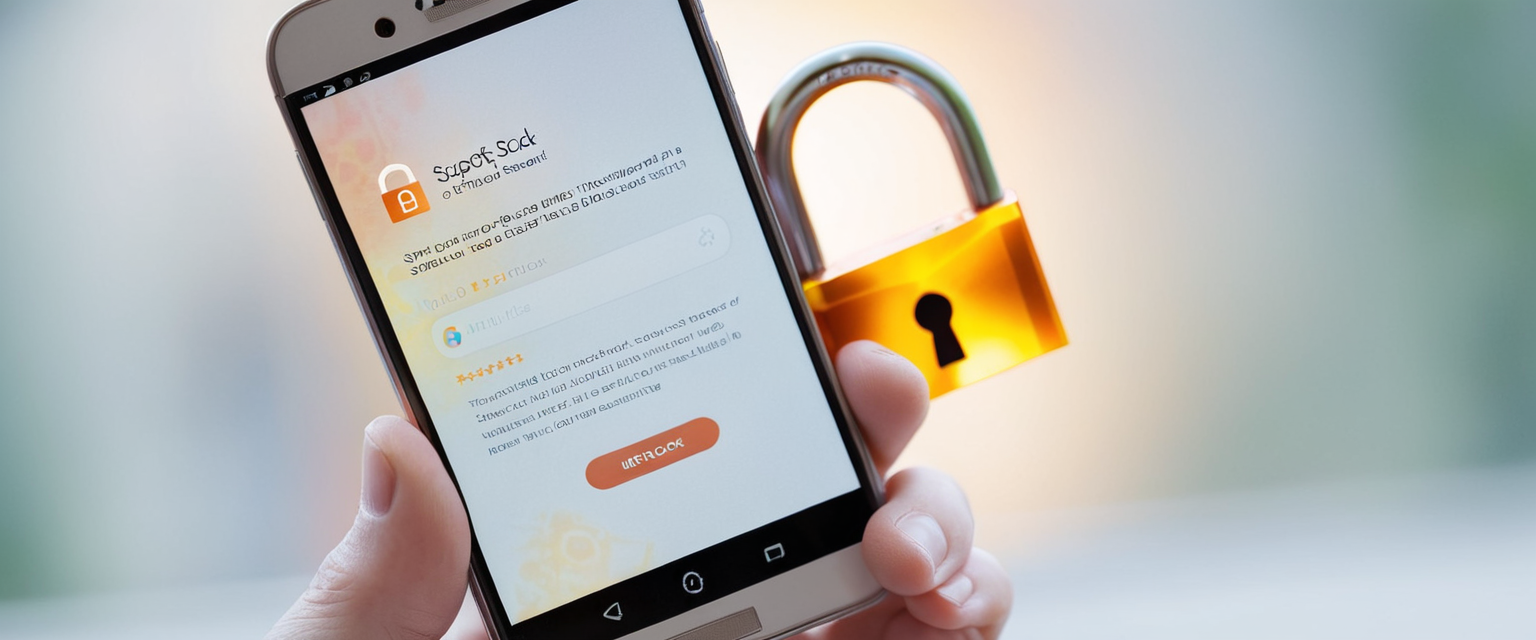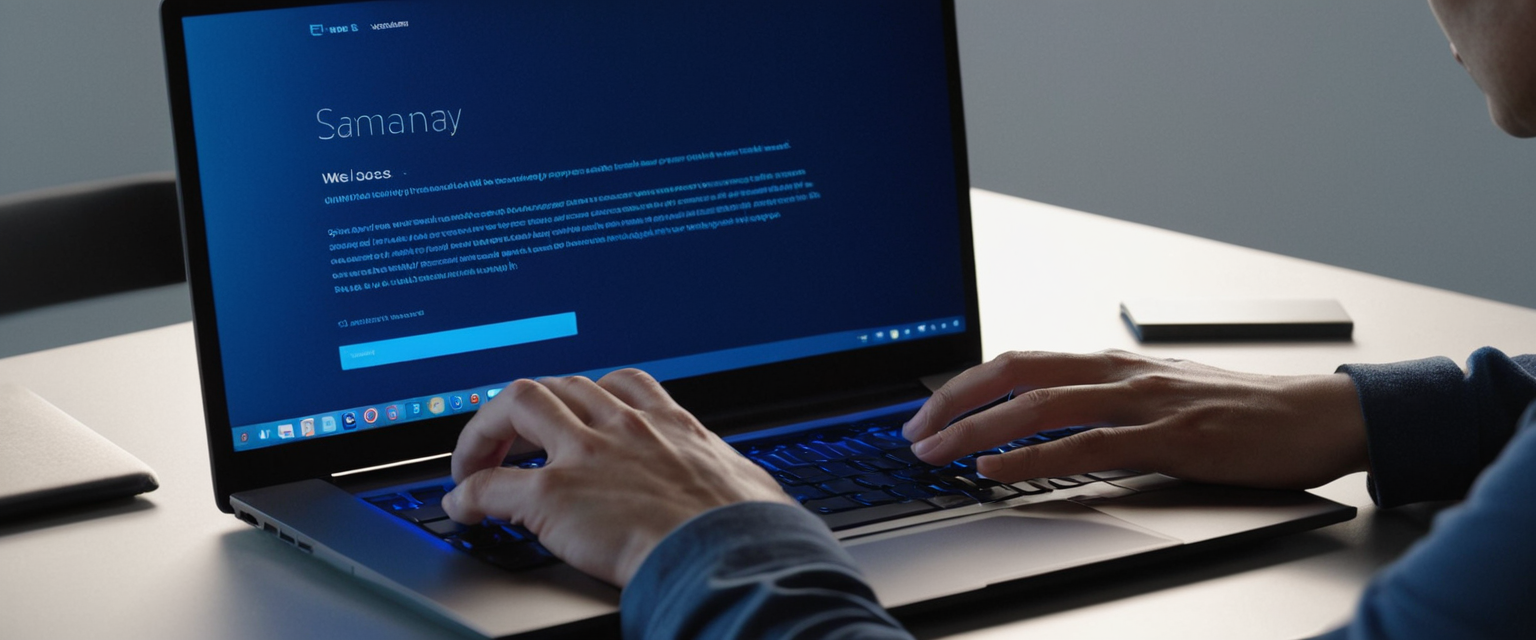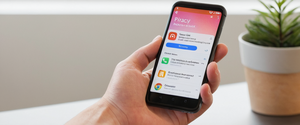
Private browsing on iPhone represents one of the most fundamental privacy features available to users seeking to maintain local browsing confidentiality while using Apple’s Safari browser. When enabled, Private Browsing prevents Safari from storing browsing history, cookies, search queries, and autofill information during browsing sessions, while simultaneously implementing advanced tracking protections that block known trackers and remove tracking parameters from URLs. Beyond its basic function of local privacy protection, Private Browsing on iPhone has evolved significantly over recent iOS versions to include sophisticated features such as locked private tabs that require biometric authentication to access, automated locking when the device is inactive, and integration with Apple’s Intelligent Tracking Prevention technology to prevent cross-site tracking and fingerprinting attempts. However, many users operate under common misconceptions about the scope of private browsing protection, often believing it provides complete anonymity online when in fact it primarily prevents local storage of browsing data and offers limited protection against ISPs, websites, and network administrators who may still monitor activity. This comprehensive analysis explores the complete landscape of private browsing on iPhone, including detailed activation procedures across different iOS versions, the technical mechanisms underlying its privacy protections, legitimate security enhancements available to users, critical limitations that users must understand, troubleshooting procedures for common issues, and comparative analysis with alternative privacy solutions available within Apple’s ecosystem and beyond.
Fundamentals of Private Browsing: Core Functionality and Basic Protections
Private Browsing on iPhone operates as a distinct browsing mode within Safari that functions as an isolated session separate from normal browsing activity. When users activate Private Browsing, Safari implements several specific protections designed to prevent local data storage and reduce tracking capabilities. Most fundamentally, the browser stops recording visited pages in the browsing history, ensures that search queries do not appear in the smart search suggestions list, and prevents autofill information such as saved passwords, usernames, and form data from being populated or saved during the session. This local privacy protection extends to cookies and website data, which are deleted automatically when the private browsing session concludes, typically when users exit the session or close the application entirely. Additionally, downloads initiated during private browsing sessions remain on the device but do not appear in Safari’s downloads list, providing a layer of organizational privacy that prevents accidental discovery of downloaded content by other device users.
Beyond the deletion of local data, Private Browsing incorporates more sophisticated protections through Safari’s Intelligent Tracking Prevention technology and advanced fingerprinting defenses. When engaged in private browsing, Safari blocks known trackers from loading entirely, preventing tracking companies from establishing connections that would allow them to follow users across websites and build behavioral profiles. Furthermore, Safari removes tracking parameters that companies embed in URLs to identify individual users, stripping these identifiers from web addresses before navigation occurs. The browser also implements protections against advanced fingerprinting techniques, which represent sophisticated methods by which websites attempt to identify users based on unique combinations of browser characteristics, device specifications, screen resolution, installed fonts, and other system attributes. This multi-layered approach to tracking prevention in Private Browsing mode significantly reduces the effectiveness of common tracking methodologies, though it does not eliminate all forms of online tracking, particularly those that depend on IP address identification or website fingerprinting techniques that Safari’s protections do not completely neutralize.
The visual interface of Private Browsing provides clear user feedback about the browsing mode status. When users activate Private Browsing in current iOS versions, the Safari address bar transforms from its typical white or gray appearance to a distinctly darker theme, usually appearing in black or dark gray, creating an unmistakable visual distinction from normal browsing mode. This visual indicator serves as a constant reminder that the current browsing session operates under private mode parameters, helping users maintain awareness of their browsing context. Private browsing tabs also do not synchronize with other Apple devices linked to the same iCloud account, meaning that websites visited in private mode do not appear in tab listings when checking open tabs from other Macs, iPads, or iPhones, further isolating the private browsing activity from the broader Apple ecosystem.
Step-by-Step Procedures for Activating Private Browsing Across iOS Versions
The practical process of enabling Private Browsing varies slightly depending on the iOS version running on the device, with Apple having adjusted the user interface and navigation methods across iOS 16, iOS 17, and earlier versions. For users operating iOS 17 and later versions, the activation process involves opening Safari and locating the tab management interface typically positioned at the bottom of the screen. Users should tap the tabs icon, which displays as two overlapping squares, and then swipe horizontally to the Private tab group button while observing the tab group options at the bottom of the screen. Once the Private tab group becomes visible through swiping, users tap on it to enter Private Browsing mode, and the interface immediately transitions to its darker appearance, confirming successful activation. From this point forward, any new tabs opened or browsing conducted occurs within the private session and benefits from all associated privacy protections.
For devices running iOS 16 or earlier versions, the activation procedure follows a slightly different sequence that reflects the earlier tab management interface design. Users should open Safari and locate the tabs icon at the bottom-right corner of the screen, which similarly appears as two overlapping squares. Tapping this icon reveals the tab groups menu, at which point users should tap the text displaying the current number of open tabs (such as “5 Tabs”) or select “Start Page” if no regular tabs are currently open. This action expands a menu showing available tab groups including the “Private” option. Selecting “Private” from this menu initiates the transition to Private Browsing mode, and users should tap “Done” to confirm the activation. The address bar immediately adopts the darker coloring characteristic of private mode, providing visual confirmation that the mode has been successfully activated. Users can subsequently open new private tabs by tapping the plus icon that appears within the private browsing interface or continue browsing within existing private tabs.
An alternative and faster method for activating Private Browsing involves long-pressing the tabs icon directly, which opens a contextual menu on compatible iOS versions. This menu includes options to immediately create a new private tab or switch to existing private tab groups without navigating through the standard tab interface. This gesture-based activation method appeals to users seeking efficiency and represents a more direct path to private browsing initiation. Users can then open new private tabs by tapping the plus icon within the Private Browsing interface, and multiple private tabs can be created and managed simultaneously, allowing users to maintain separate browsing contexts and sessions within the private mode.
Advanced Security: Locked Private Browsing with Biometric Authentication
Recognizing that physical access to an unlocked iPhone could allow unauthorized users to access private browsing tabs that remain open on the device, Apple introduced a significant privacy enhancement in iOS 17 known as Locked Private Browsing. This feature allows private browsing tabs to automatically lock when the device becomes inactive or when users exit the Safari application, requiring biometric authentication or device passcode entry to unlock and access the private tabs subsequently. This represents a meaningful security upgrade that extends privacy protection beyond the traditional scope of preventing data storage to also preventing unauthorized access to active private browsing sessions.
To enable Locked Private Browsing, users must navigate to the Settings application and scroll down to locate the Safari settings menu. Upon entering Safari settings, users should scroll further to access the Privacy & Security section, where they will find options to “Require Face ID to Unlock Private Browsing,” “Require Touch ID to Unlock Private Browsing,” or alternatively “Require Passcode to Unlock Private Browsing” for devices that do not support biometric authentication. Toggling the appropriate option to the enabled position activates this feature for all private browsing sessions going forward. Once activated, whenever users switch away from Safari to another application, or when their iPhone’s display locks automatically, any private tabs that are open will become locked behind a secure authentication screen.
The practical operation of Locked Private Browsing requires users to authenticate through Face ID, Touch ID, or passcode entry each time they wish to access private tabs after the lock has been activated due to inactivity or device sleep. This authentication requirement occurs transparently as users interact with their private browsing tabs, appearing as a simple unlock interface overlaid on the Safari application. Once authenticated successfully, users regain full access to their private tabs and can continue browsing without additional authentication prompts until inactivity triggers the locking mechanism again. For users who have not configured Face ID on their device, the system automatically presents the “Require Passcode to Unlock Private Browsing” option as an alternative authentication method, ensuring that users without compatible biometric hardware can still benefit from this privacy protection.
Device management administrators can also enforce Locked Private Browsing policies on corporate or managed devices, ensuring that private browsing always remains protected by authentication requirements regardless of user preference. This capability proves particularly valuable in organizational settings where device security policies mandate additional access controls even for private browsing sessions. The automatic locking behavior provides meaningful protection against situations where users step away from their iPhones without manually locking them, preventing opportunistic access to private browsing history or activities by colleagues, family members, or other individuals who might gain temporary physical access to the device.

Troubleshooting Private Browsing Accessibility Issues
Despite its straightforward implementation, many users encounter situations where the Private Browsing option does not appear in Safari or appears grayed out and inaccessible. The overwhelming majority of these accessibility issues stem from Screen Time restrictions that may have been configured on the device, either intentionally by the device owner or by device administrators implementing parental controls or organizational policies. When Screen Time restrictions are activated and Web Content is set to anything other than “Unrestricted,” Safari automatically disables the Private Browsing option, rendering it completely unavailable regardless of iOS version or Safari updates.
To resolve this issue, users should navigate to Settings and locate the Screen Time section, then scroll down to find “Content & Privacy Restrictions.” Opening this submenu should reveal “Content Restrictions” as a selectable option. Within Content Restrictions, users will find the “Web Content” setting that must be examined and adjusted if necessary. If Web Content is set to “Limit Adult Websites” or any other restrictive setting besides “Unrestricted,” users must change this setting to “Unrestricted” to restore Private Browsing functionality. After making this adjustment, users should exit the Settings application and return to Safari, where the Private Browsing option should now appear and function normally.
In some cases, particularly with older iOS versions, users may need to access General Settings and navigate to Restrictions instead of Screen Time, as the interface terminology and menu structure changed across iOS versions. Regardless of the specific menu hierarchy, the fundamental principle remains constant: any settings that restrict web content access will simultaneously disable Private Browsing as a protective measure to ensure that content filtering restrictions cannot be circumvented through private browsing mode. Another potential cause of Private Browsing unavailability involves device management profiles or configuration profiles installed through mobile device management solutions, which may restrict Private Browsing access as part of organizational security policies. In these scenarios, users would need to contact their device administrator or IT support team to request restoration of Private Browsing access if such restoration is permissible under organizational policy.
Understanding the Limitations and Misconceptions of Private Browsing
While Private Browsing provides meaningful local privacy protections, users must clearly understand its significant limitations and scope boundaries to avoid operating under false assumptions about their online anonymity. Perhaps the most critical misconception involves the belief that Private Browsing renders users invisible or anonymous online, when in fact it primarily prevents local storage of browsing data on the device itself. Apple’s official documentation explicitly clarifies this distinction by noting that “Private Browsing does not hide your browsing from your employer, your internet service provider, or the websites you visit.” This statement encapsulates the fundamental reality that private browsing offers no protection against network-level monitoring or tracking by parties with access to network infrastructure.
Internet Service Providers retain complete visibility into website domains and web services accessed by users’ devices, as all network traffic must pass through ISP infrastructure regardless of whether the user engages in private browsing mode. The ISP observes the IP addresses and domains that devices connect to, though the specific content of encrypted HTTPS connections remains hidden from ISP inspection due to end-to-end encryption protocols. However, encryption does not prevent ISPs from logging which websites users visit or when those visits occur, and in jurisdictions without strict privacy protections, ISPs may legally sell anonymized or semi-anonymized browsing data to data brokers and advertisers. Private Browsing provides no protection against this ISP-level data collection, as the protection of private browsing operates entirely within the device and browser scope.
Similarly, websites and web services maintain complete visibility into users’ IP addresses whenever users access them, and this information persists regardless of private browsing mode status. The IP address reveals approximate geographic location and typically identifies the user’s ISP, potentially exposing the user’s workplace or home network. Private Browsing does not mask, hide, or obscure the user’s IP address in any way, making the user identifiable to websites based on this persistent network identifier. If users log into accounts while in private browsing mode, that activity becomes associated with their user account, negating any privacy benefits that private browsing otherwise provides. Thus, users who log into Facebook, Google accounts, email services, or other platforms during private browsing sessions create explicit associations between their account identity and their browsing activity, which defeats a significant portion of private browsing’s utility.
Website fingerprinting represents another tracking methodology that private browsing does not effectively prevent. Through fingerprinting techniques, websites can identify users based on unique combinations of device characteristics, browser version, installed fonts, screen resolution, operating system version, and other technical attributes that collectively create a distinctive identifier for the device and browser combination. While Safari implements anti-fingerprinting protections that present simplified or randomized system information to websites, these defenses do not completely eliminate fingerprinting vulnerabilities, and sophisticated tracking operations can still achieve device identification despite these protective measures. Additionally, browser fingerprinting can identify users across different websites and contexts, effectively defeating the isolation that private browsing sessions provide.
DNS queries, which resolve website domain names to IP addresses, may leak user identities to network observers if DNS traffic is not encrypted, particularly when users rely on standard unencrypted DNS services provided by their ISP. While Safari supports DNS over HTTPS encryption to protect DNS query privacy, Private Browsing mode does not automatically encrypt DNS queries, requiring additional configuration of privacy-focused DNS services to achieve comprehensive DNS privacy. Recent security vulnerabilities have even demonstrated that DNS queries could leak through Private Relay encryption in specific scenarios, highlighting the complex nature of complete network-level privacy protection. Furthermore, system-level DNS caches, temporary files, and other operating system artifacts may retain traces of private browsing activity even after Safari deletes its own local records, leaving potential recovery opportunities for sophisticated forensic analysis.
Privacy Protection Technologies and Advanced Features
Safari incorporates sophisticated privacy technologies that function in conjunction with Private Browsing to provide more comprehensive protection than private browsing mode alone. Intelligent Tracking Prevention, introduced in Safari 12 and continuously enhanced through subsequent iterations, represents Apple’s machine learning-based approach to identifying and blocking tracking companies that monitor users across websites. ITP operates through a multi-faceted methodology that identifies domains with tracking capabilities through machine learning analysis of user behavior patterns, then partitions data stored by such domains so that tracking information cannot be carried across different websites visited by users. The evolution of ITP through versions 2.0, 2.1, 2.3 and beyond has progressively tightened restrictions on how tracking companies can exploit cookies, storage mechanisms, and other data structures to maintain cross-site tracking capabilities.
When Private Browsing is active, Intelligent Tracking Prevention reaches maximum effectiveness by operating within the already-isolated context of private sessions. All first-party cookies and website data are automatically deleted when the private browsing session ends, client-side cookies set through JavaScript expire after seven days rather than remaining persistently, and the Storage Access API requires explicit user consent before cross-site tracking entities can access their stored data. This combination of restrictions effectively prevents long-term tracking profile construction for users who maintain isolated private browsing sessions and do not maintain persistent cookies across sessions. Additionally, Safari’s advanced fingerprinting protections operate in private browsing by preventing websites from gathering detailed information about browser configuration, installed fonts, and other identifying characteristics that enable fingerprinting-based tracking.
The Privacy Report feature allows users to examine which trackers Safari has blocked on the current webpage and view a summary of blocked tracking attempts across multiple websites over time. Users can access the Privacy Report by tapping the page menu button in Safari (typically appearing as an “aA” icon or similar menu button), then selecting “Privacy Report” from the available options. The Privacy Report displays information about known trackers that attempted to load on the visited website but were prevented by Intelligent Tracking Prevention and cookie blocking, providing transparency about active tracking attempts and demonstrating the protective value of Safari’s privacy features. This feature functions in both normal and private browsing modes, though private browsing provides additional isolation that prevents cookies and tracking data from persisting across sessions anyway.
For users seeking protection at the network level, iCloud Private Relay represents an optional enhancement available to iCloud+ subscription holders. iCloud Private Relay routes Safari browsing traffic through two separate encrypted internet relays operated by Apple and a content delivery partner, ensuring that neither Apple nor the content partner can observe both the user’s identity (IP address) and the websites they visit simultaneously. The first relay, operated by Apple, receives encrypted DNS queries and routing information but cannot observe the destination website. The second relay, operated by a third-party content provider, generates a temporary IP address and routes traffic to the destination website while remaining unable to observe the user’s original IP address. This architecture theoretically prevents ISPs from monitoring browsing activity and prevents websites from observing users’ actual IP addresses, though iCloud Private Relay itself cannot prevent websites from tracking users through other means such as login credentials or fingerprinting. Additionally, iCloud Private Relay remains unavailable in certain countries and regions due to regulatory restrictions, limiting its utility for globally distributed users.

Comparative Analysis with Alternative Privacy Approaches
While Safari’s Private Browsing provides a functional foundation for local privacy protection, users seeking more comprehensive privacy protections may consider alternative privacy browsers or supplementary privacy technologies. Firefox Focus represents a minimalist privacy-oriented browser from Mozilla that prioritizes data protection through simplified design and automatic deletion of all browsing data after each session. Unlike standard Firefox or Chrome, Firefox Focus saves no browsing history, cookies, passwords, or other data by default, making it effectively identical to Safari’s private browsing in permanent mode. Firefox Focus also includes tracker blocking and can integrate with Safari on iOS to provide enhanced privacy protections for users who primarily use Safari but desire supplementary privacy capabilities.
Brave Browser has emerged as a popular privacy-focused alternative available on iOS that incorporates aggressive tracker blocking, fingerprinting prevention, and cookie blocking by default in all browsing modes. Brave removes tracking parameters from URLs, blocks ads by default, and implements an optional cryptocurrency reward system for users willing to view privacy-respecting advertisements. The browser’s privacy protections exceed those of standard Safari private browsing in several dimensions, as Brave’s protections apply to all browsing by default rather than only within designated private sessions. However, like all iOS browsers, Brave remains constrained by Apple’s WebKit rendering engine requirement, preventing truly unique technical implementations that could overcome iOS-level restrictions.
DuckDuckGo Browser offers similar privacy-focused features including built-in tracker blocking, forced HTTPS connections, and a private search engine that does not track searches or build user profiles. The browser emphasizes that it does not collect or sell user data regardless of browsing mode, taking a philosophical stance that privacy should be the default rather than an optional feature. Like other privacy browsers on iOS, DuckDuckGo Browser must use WebKit rendering, but it compensates through aggressive application-level privacy protections at the browser software level. These alternative browsers generally require more deliberate user action to install and configure than using Safari’s built-in Private Browsing feature, but they offer stronger privacy defaults that protect all browsing activities rather than requiring users to manually activate protection through specific tab modes.
The Tor Browser represents the extreme end of the privacy spectrum, offering true anonymity by routing traffic through multiple encrypted layers of proxy servers operated by the Tor network. The Tor Browser prioritizes anonymity over performance, typically resulting in significantly slower browsing speeds due to the routing through multiple relays. While Tor provides unparalleled privacy and anonymity, the technical overhead and substantially reduced browsing performance limit its utility for everyday browsing. Additionally, Tor Browser availability on iOS remains limited, and configuring Tor on iOS requires more technical knowledge than deploying standard privacy browsers.
For users unable or unwilling to switch browsers entirely, VPNs provide an additional layer of protection by encrypting all traffic and routing it through VPN provider servers, effectively obscuring IP addresses from ISPs and websites. However, VPNs do not provide anonymity comparable to Tor, as the VPN provider itself observes all traffic, and many VPN services retain activity logs that could reveal user behavior to law enforcement through subpoena. Additionally, using VPNs does not prevent fingerprinting or account-based tracking when users log into their personal accounts. VPN services should be evaluated carefully for their privacy policies and trustworthiness before deployment, as some VPN providers have been discovered operating malicious services or tracking users despite privacy claims. When combined with Private Browsing, a reputable VPN service can meaningfully enhance privacy by preventing ISP observation of website access, though it does not address all privacy concerns and requires ongoing vigilance regarding the VPN provider’s actual practices and policies.
Best Practices and Recommendations for Enhanced Privacy
Users seeking to maximize the privacy benefits of Private Browsing should adopt several complementary practices that work synergistically with the built-in protections. First, activating Locked Private Browsing through Face ID or Touch ID provides meaningful security against unauthorized access to private tabs if the device falls into unauthorized hands. This protective measure complements private browsing data protection by preventing immediate access to sessions and adding a friction point that discourages opportunistic browsing session access. Users should configure this setting especially if they share devices with family members or frequently place devices in unsecured locations such as shared desks or public spaces where others might gain temporary physical access.
Second, users should avoid logging into personal accounts while using Private Browsing if their primary objective involves privacy from account providers themselves, as logging in creates explicit associations between account identity and activity. If users require account access during private browsing, they should carefully consider whether the privacy benefit of private browsing remains meaningful, as the account association effectively enables the account provider to log the entire browsing session against the user’s account. This limitation reflects a fundamental design tradeoff in privacy technologies where true anonymity requires avoiding account associations, while private browsing merely prevents local storage.
Third, users should understand that Private Browsing alone provides insufficient protection from ISP monitoring or workplace network surveillance without additional network-level protections such as VPNs or iCloud Private Relay. If users engage in browsing activities they specifically wish to hide from ISPs or network administrators, they should combine Private Browsing with appropriate network-level privacy technologies to close ISP-level visibility. Workplace networks particularly warrant this consideration, as network administrators routinely monitor and log website access and may coordinate with management regarding employees’ browsing activities during work hours.
Fourth, users should regularly review Safari privacy settings within the Settings application to ensure that all available privacy protections remain properly configured. This includes verifying that “Prevent Cross-Site Tracking” remains enabled to maintain ITP functionality, that “Hide IP address” protection is enabled for eligible iCloud+ subscribers, that fraudulent website warnings remain active, and that third-party cookie blocking remains configured appropriately. Additionally, users should periodically clear their regular (non-private) browsing history and data to prevent accumulation of persistent data outside of private browsing sessions, as this data could reveal browsing habits to individuals with device access.
Fifth, users should employ privacy-respecting search engines such as DuckDuckGo when performing searches in private browsing sessions, rather than relying on Google or Bing search engines that track user searches and build behavioral profiles over time. Configuring a privacy-focused default search engine specifically for Private Browsing can be accomplished through the Safari settings under “Private Search Engine,” allowing users to maintain their preferred search engine for normal browsing while using privacy-focused search in private mode. This layered approach to search privacy prevents search providers from building long-term behavioral profiles based on queries, as search engines cannot correlate searches across multiple sessions when users maintain separate search engine configurations for different browsing modes.
Sixth, users who combine Private Browsing with VPN services should ensure that the VPN remains active during private browsing to prevent accidental IP address exposure through DNS leaks or temporary disconnections. VPN applications should be configured to automatically reconnect upon disconnection and to block all traffic if VPN connectivity drops, preventing unprotected browsing activity when VPN protection momentarily lapses. Regularly verifying that the VPN connection status indicator remains active throughout private browsing sessions ensures consistent protection, particularly when switching between networks or experiencing connectivity transitions.
Security Evolution and Recent Developments in Safari Privacy
Apple has continuously enhanced Safari’s privacy architecture through successive iOS releases, with notable recent developments addressing previously identified vulnerabilities and expanding protection mechanisms. In June 2023, Apple rolled out significant enhancements to Safari’s Private Browsing feature including the introduction of automatic locking for idle private tabs, expansion of tracking protections, and improved fingerprinting defenses. These updates reflected Apple’s commitment to progressively strengthening private browsing security as tracking methodologies evolve and new vulnerabilities become identified through security research and real-world deployment scenarios.
September 2023 witnessed the release of Safari 17 alongside iOS 17, which introduced Profile functionality for maintaining separate browsing contexts, expanded Face ID-locked Private Browsing to become a more robust feature, implemented default blocking of tracking in private mode, and simplified private-mode search engine selection. The introduction of Safari Profiles allows users to maintain completely isolated browsing environments with separate histories, cookies, and settings, extending the privacy isolation concept beyond Private Browsing tabs to enable permanent separation between different use cases or identities.
April 2025 brought critical security updates addressing WebKit vulnerabilities including CVE-2025-30425, a privacy-bypass vulnerability that could have allowed tracking in Private Browsing mode by leaking cached or DOM state across browsing sessions. This vulnerability patch demonstrates ongoing security research identifying and addressing novel attack methodologies that could circumvent private browsing protections through technical mechanisms not previously anticipated or protected against. Such patches ensure that private browsing protections maintain effectiveness against emerging attack vectors and evolving tracking methodologies.
Recent security updates have also addressed DNS query leaks through iCloud Private Relay that could reveal browsing activity despite encryption, access control issues that could permit unauthorized access to private tabs without authentication, and sandbox escape vulnerabilities that could enable malicious applications to access private browsing data. These identified vulnerabilities and their subsequent patching illustrate the complex security landscape surrounding private browsing, where protections operate across multiple system layers and require coordinated security updates to multiple system components to maintain comprehensive protection. Users should maintain current iOS versions to benefit from such security patches and ensure that known vulnerabilities do not persist in their active systems.
Your iPhone’s Private Browsing: Unlocked
Enabling Private Browsing on iPhone represents a straightforward but meaningful first step toward improving local privacy and reducing tracking exposure within the scope of browser functionality. The process itself involves navigating to the appropriate tab management interface within Safari and selecting the Private option from available tab groups, with variations in user interface requiring adaptation based on iOS version. Beyond basic activation, users benefit significantly from supplementary features such as Locked Private Browsing that extends protection to active sessions through biometric authentication, Privacy Report examination that provides transparency regarding blocked tracking attempts, and integration with supplementary privacy features such as Intelligent Tracking Prevention and privacy-focused search engine configuration.
However, users must maintain realistic expectations regarding private browsing’s protective scope and acknowledge its fundamental limitations regarding ISP-level monitoring, website-based identification through IP addresses, account-based tracking, fingerprinting vulnerabilities, and network administrator surveillance. Private Browsing fundamentally protects against local data storage and peer-level discovery of browsing activity from other users on shared devices, which represents valuable privacy in common scenarios such as shared family devices or workplace-shared computers. For users requiring privacy from network-level observers or comprehensive anonymity online, private browsing alone proves insufficient and requires supplementary technologies such as VPNs, iCloud Private Relay, or more dramatic changes such as switching to privacy-focused browsers or Tor.
Ultimately, private browsing should be understood not as a complete privacy solution but rather as one component within a broader digital privacy strategy that combines multiple complementary protections based on individual threat models and privacy requirements. Users sharing devices with family members benefit substantially from Private Browsing and Locked Private Browsing features that prevent peer observation of browsing activity. Users concerned about ISP monitoring should combine Private Browsing with VPN services or iCloud Private Relay. Users engaged in highly sensitive or anonymous browsing may require Tor Browser or other specialized privacy tools beyond Safari’s capabilities. By understanding private browsing’s precise scope and limitations, selecting appropriate supplementary privacy technologies based on specific threat models, and implementing layered protections across multiple system levels, users can construct effective privacy strategies that address their particular concerns while acknowledging that absolute online anonymity remains impossible to achieve through browser features alone.
Protect Your Digital Life with Activate Security
Get 14 powerful security tools in one comprehensive suite. VPN, antivirus, password manager, dark web monitoring, and more.
Get Protected Now





